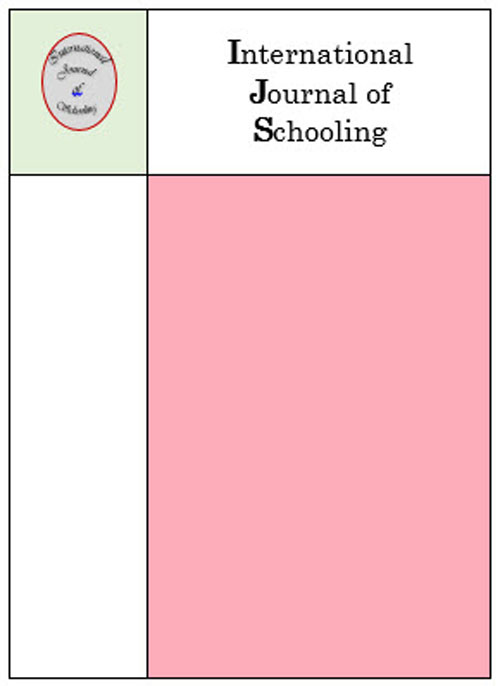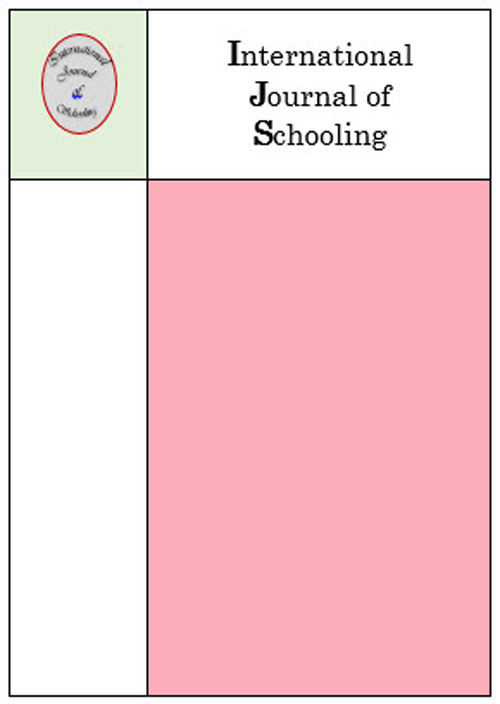فهرست مطالب

International Journal of Schooling
Volume:1 Issue: 1, Spring 2019
- تاریخ انتشار: 1398/01/12
- تعداد عناوین: 5
-
صفحات 47-53
-
Pages 1-15BackgroundIn today's world, entrepreneurship education has become one of the most important and extensive activities in the Technical & Vocational education system, especially at higher education level. This research has been conducted in the field of vocational education with the entrepreneurial approach and is a comparative study.ObjectivesThe purpose of this study is to compare the curriculum of technical and vocational training (official and academic) of the two most prosperous countries in the field of entrepreneurship education with Iran (our country)MethodsThis applied-descriptive research has been carried out applying comparative study method of George Brody, and the main elements of the curriculum including purposes, content, teaching-learning activities and evaluation methods in technical and vocational education have been observed approaching the promotion of Entrepreneurship education.ResultsThe results of this study show that there is a high similarity between the chosen country with Iran in discussing the goals and content of the curriculum, but there is a great deal of difference in the discussion of teaching-learning activities and evaluation between selected countries and Iran. Iran continues to use traditional methods in teaching and teaching-learning activities, but the approach of the chosen countries is a new one based on goals and content as well as group methods. Moreover, in the evaluation methods, the selected countries use a variety and novel methods, but in Iran, oral and written tests are still employed traditionally.Conclusionsbased on the study, it seems that Iran needs to review and change the approach to new and emerging approaches in the execution stage of the curriculum.Keywords: Curriculum_Technical & Vocational_entrepreneurship education_comparative study
-
Pages 17-26Backgroundpositive emotion causes to pleasure and increases the potential enjoyable activities because it is believed that positive emotion can influence the job motivation, as more important duties have more motivation.Objectivesthis research studies the effectiveness of positive affect induction on the students' motivation in sport and the role of increasing this motivation on Tehran high school students' academic achievements.MethodsIn this study the population included all Tehran high schools. Harter's classroom affect and motivational scale and the Sport Motivation Scale (SMS) were used as the instruments. Generally, 4 groups of students have been chosen. In 3 groups of positive affect induction, the first group watched a comic movie, the second group received a gift and the third group listened to a joke, while the control group didn't receive any change. Again the students' academic achievement motivation and their motivation in sport were tested.Resultsthe results showed that positive affect induction had increased the boys' academic achievement motivation significantly but had no effect on the girls'.ConclusionsThis study showed that when the motivation in sport increases the academic achievement motivation increases as well.Keywords: positive affect induction, Academic motivation, sport motivation, high school students, student’s motivation
-
Pages 27-34BackgroundMarital satisfaction is a common concept to show the degree of happiness and solidarity in marital relationship.ObjectivesThis paper aims to study the effectiveness of assessment and education phase of schema therapy on marital satisfaction of high school married students in Ghaen city, eastern Iran.MethodsThe study has a quasi-experimental design with pre-test, post-test, control group, and a follow-up phase. The sample consisted of 30 married students who were selected by convenience sampling method and randomly assigned into experimental and control groups (n=15 per group). Both groups were assessed using Young Schema Questionnaire - Short Form and ENRICH Marital Satisfaction Inventory in the pre-test, post-test and follow-up phases. The early maladaptive schemas were taught to the experimental group in 8 two-hour sessions held once a week.ResultsThe obtained data were analyzed in SPSS software (V-22) using multivariate analysis of variance. While similar before intervention, the experimental and control groups were significantly different after intervention. In other words, education led to increased, long-lasting levels of marital satisfaction.ConclusionsTherefore, it can be concluded that marital satisfaction can enhance by implementing assessment and education phase of schema therapy.Keywords: Assessment, education phase, Schema therapy, early maladaptive schemas, marital satisfaction
-
Pages 35-46BackgroundNowadays, organizations are fully aware that, to be successful in this complicated world and remain in business environment, it is necessary to have the most talented persons in their organization. “Talent management” is defined as a systematic and dynamic process of exploration and maintenance of talented individuals. Talent management is important in education. Because, school as human centered organizations, should identify and develop talented students and teachers.ObjectivesThe purpose of this study is developing and validating talent management test based on Davies model. Davies in his book defined a model as key dimensions of talent management with four components: value, personal characteristic, working with others and strategic acumen.MethodsThe recent paper is descriptive- correlative regarding data gathering and its goal is applicable. Statistical populations are 311 teachers of primary schools of Mashhad. The data were gathered by the questionnaire designed by the researcher. The reliability of the test was defined as 0, 98 in the first run.ResultsAfter exploratory and confirmatory factor analysis, five components of personal characteristics, professional communication, strategic acumen and strategic leadership defined as factors that impact on talent management.Conclusionsbased on the study, it seems that Educational managers need to review and change the approach to talent management style, and five factors must be considered for successful management of talent in schools.Keywords: developing, validating, Test, Talent Management, Education, Davies
-
Pages 47-53BackgroundOne of the theoretical perspectives for the study of wisdom is related to intelligence. Equilibrium theory of wisdom begins with tacit knowledge structure which is a major component of practical intelligence. Hypotheses also show that there is a relationship between creativity and wisdom. Therefore, this research has been conducted in the field of Wisdom with an analytical approach and is a correlation study.ObjectivesThe aim of this study was to investigate the relationship between creativity and intelligence with wisdom in youths.MethodsThe research design is correlation. Sample consisted of 120 volunteer. Their mean age was 20(in the range of 16-24) who 50 percent (n = 60) were girl and 50 percent (n = 60) were boy. Wechsler Youth Intelligence Scale (WAIS-R), Torrance Test creativity, Abedi creativity test was used to collect information from three-dimensional scale of wisdom (3D-WS). Pearson correlation test was used to analyze the data.ResultsThe results showed that there is a significant relationship between creativity and intelligence with wisdom and creativity, if a person gets higher score in creativity and intelligence with wisdom index will get higher score in wisdom. Given the importance of internal and external factors associated with wisdom, understanding these factors will contribute to a better understanding of wisdom structure.ConclusionsThe findings indicate that there is a relationship between intelligence and creativity with wisdom. Therefore, further research in this field and the emphasis on the subject of creativity and intelligence in the educational system can enrich the concept of wisdom in the future.Keywords: wisdom, creativity, Intelligence


